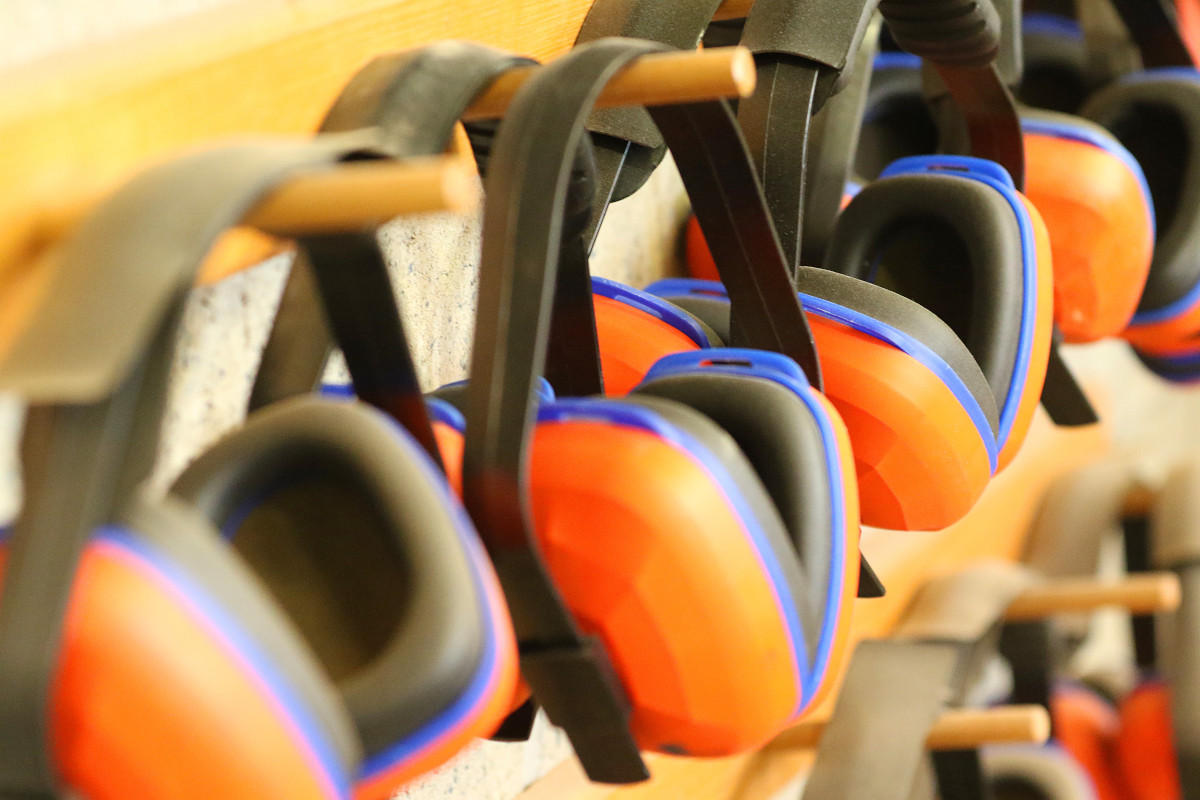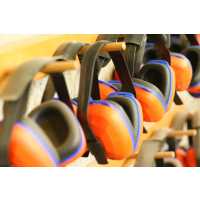- Home
- Blog
- Safety & PPE
- What PPE Ear Protection is Used on DIY Projects
What PPE Ear Protection is Used on DIY Projects

If you are a fan of DIY projects, then you are likely familiar with an array of protective equipment, from work gloves to goggles. It's important to have the right tools for the job, particularly if you are undertaking a task at home, and that's where personal protective equipment comes in handy.
Also known as PPE, this equipment is available for many types of safety concerns, from respiratory guards to eye coverage, and for workers and crafters alike.
But what about your ears when working on something? Extended noise exposure can be very damaging, so it is essential to wear hearing protection for your safety, and PPE is the best choice.
What are the Four Basic Types of Ear Protection?
Gear for hearing protection is available in four main types. And when choosing one over the other, it depends on the wearer and the project's noise level. However, it's always a good idea to keep hearing PPE on hand when working in a shop or at home.
Ear Muffs
Most people are familiar with protective ear muffs formed by cups attached by a headband and covering each ear. Thanks to soft sound insulation inside, noise levels are reduced drastically to protect your eardrums from noise damage or perforation by flying objects.
Because these ear defenders wrap across the head, they can be uncomfortable when worn for long periods, as workers with hard hats can attest. However, they are some of the best options for hearing protection PPE available, and are generally good for DIY-ers.
Earplugs
Another popular range of ear protection PPE, earplugsare soft and small accessories that fit directly into your hearing canal to reduce direct noise exposure to the eardrum. Earplugs are made of rubber or foam and are typically disposable after a fairly short use-life, depending on how often you wear them.
Semi-inserts
Also known as canal caps or ear pods, these are pushed in and held there by a small head cord attachment or with adjustment handles.
Semi-inserts are best for short-term use or when hearing protection needs to be taken on and off repeatedly during a project, as the handles or cord let you adjust them without getting grime in your ears from touching the pods directly.
Plugs
Moulded plugs are another type of earplug, but are made with more durable materials that can be reused time and time again, unlike disposable foam ones. They can also come with cord attachments to make wearing easier.
Cordless or not, plugs are also great ear protection for masks, as the ear attachments don't interfere with mask elastics.
Silicone plugs are some of the most common for their comfort, noise protection, and price, and DIY enthusiasts should take a page from construction workers and keep a pair on hand.
What is a Filtered Earplug?
A particularly exciting form of hearing protection, the filtered earplug comes in passive or active models. A passive filtered earplug uses particularly absorbent material and designs to reduce noise frequencies, whereas active earplugs have a small microphone built-in to analyze and counteract those frequencies, essentially 'filtering' out the sound.
What Are Ear Protectors Used For?
While certain noise levels might not seem high enough to do lasting damage, you'd be surprised at how delicate the workings of the body's auditory system are.
The primary use of hearing protection is to prevent your eardrum from being vibrated too much by the delivery of sound waves through the auditory canal. If the noise is too much, the fine bones and membrane behind your eardrum can become harmed and repeated exposure leads to hearing damage.
What Standard Does Australia Use?
Because there are different PPE standards for hearing protection depending on your location, Australia uses a slightly altered standard than the rest of the world. Let's take a look at Australia's PPE compliance standards first.
Hearing PPE needs to be tested and pass Australian Standard AS/NZS 1270:2002: Acoustics - Hearing Protectors, and AS/NZS 1269.3:2005 Occupational Noise Management - Hearing Protector Program.
These standards sound daunting but can be broken down into one fairly easy protocol: the ambient noise levels surrounding a person must conform to the class of hearing protection worn.
Class 1 protection is the lowest, and suitable for equally low levels of noise; Class 5 is the highest protection level and ideal for intense or extended periods of sounds. So, when selecting the right kind of PPE to protect your hearing, choosing the right class is essential.
What’s the Difference Between SNR and NNR?
The U.S. and Europe use different terms for their PPE and noise standard categories to classify hearing protection according to safety levels, called a Noise Reduction Rating (NRR) and Single Number Rating (SNR) respectively.
Both of these standards refer to the levels of noise reduction that each hearing protection product offers, helping buyers to choose forms of hearing PPE that will best ensure their safety when shopping.
The primary difference between SNR and NNR is that European SNR products have ratings that are consistently a few decibels higher than comparable North American NNR products. And while this is not a big deal for most wearers, it's still important to choose the right rating level for the amount of noise you will be exposed to, scaling up or down accordingly.
How To Comply With Australian Standards
It's important to abide by the Australian AS/NZS ratings on hearing protection when buying it, as NRR and SNR protocols use different audio metrics and are not comparable to Australian PPE products.
Check the packaging for test results and ensure the rating level is adequate for the amount of noise involved in your project or job.
Additionally, you should only buy the standard types of recommended hearing protection, including earplugs, inserts, or ear muffs. Simply relying on noise-cancelling music headphones is not enough for certain noise frequencies and won't offer protection against hearing damage!
Factors to Consider When Choosing to Purchase Ear Protection
Matching the sound level of your environment to the protection rating of hearing PPE is important. For example, a Class 1 product with low sound reduction is generally not suitable for industrial or construction settings where noise is very prevalent.
Any hazardous sound levels need to be protected against, no matter the setting— particularly when wearers are exposed to an average total of 85 decibels over 8 hours.
Furthermore, wearer comfort needs to be considered, particularly when pairing hearing PPE with other forms of protective gear, whether that be goggles, head guards, or ear protection for masks. Being able to move and interact with ease is essential to wearer-wellbeing.
Final Thoughts
Even if you don't realise how loud a project or workplace might be, hearing protection is the wisest course of action. And though some DIY tasks only involve a slight noise level, having earplugs or inserts on hand, is important for your auditory health— hearing damage doesn't take long to occur, so it's best to be safe rather than sorry.
FAQs
What Are the Types of Hearing PPE?
Hearing PPE comes as ear muffs, earplugs, and inserts. Earplugs themselves can be disposable foam ones, or moulded silicone plugs that last for many uses, as well as filtered earplugs that emit micro-sounds.
When Should PPE Ear Protection Be Used?
People should not be exposed to any noise over 140 decibels without hearing PPE, and the typical target for putting on such protective gear is around 80 decibels. It's just best to wear hearing protection whenever possible.
Which Ear Protection Is Best?
In general, earplugs or protective ear muffs are some of the best choices as they offer comprehensive hearing protection. Earplugs are particularly adept as safety guards because they sit closest to the eardrum and block sound directly.


